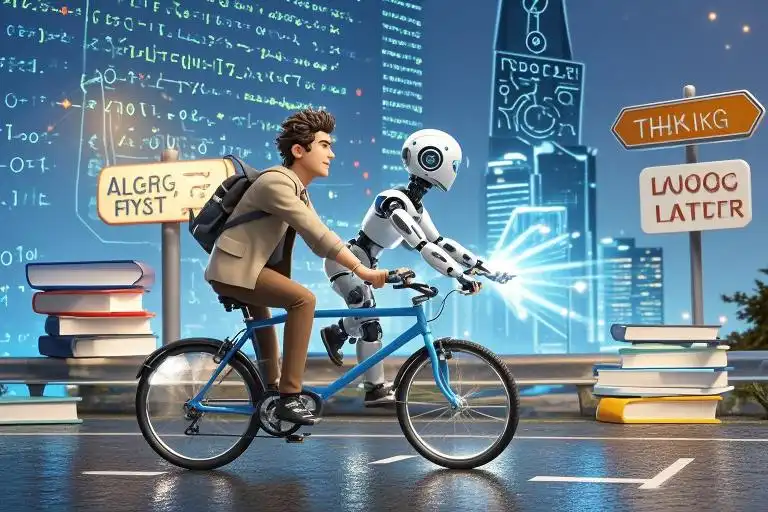The coffee had gone cold. Sarah stared at her screen, frustration mounting as GitHub Copilot kept suggesting the wrong API endpoint for her weather app. She’d asked the AI tool seven different ways, yet it stubbornly repeated the same flawed solution. It wasn’t until she sketched the data flow diagram on her notebook—old-school pen and paper—that she spotted the missing authentication layer.
Sound familiar?
When ChatGPT-4o writes Python scripts faster than I can type “Hello World,” you might wonder: Is learning to code still worth it? Let’s flip that question: Would you trust someone to build your dream house just because they own a nail gun?
The Unchanged Truth Beneath the AI Hype
Programming isn’t about typing syntax—it’s engineering thinking. Imagine teaching a sous-chef bot to make béarnaise sauce. Unless you understand emulsion principles, you’ll keep getting broken hollandaise. Similarly, AI coding tools amplify (but don’t replace) these four essential skills:
1. System Whispering: Speaking the Machine’s Language
My students often confuse RAM with storage. Here’s how I explain it:
- Your desk (RAM): Fast access, limited space, clears nightly
- Your warehouse (Storage): Slower retrieval, massive capacity, permanent
When AI generates code that loads 10GB files into memory, only those who grasp this distinction will shout: “Wait—that’ll crash our servers!”
2. Data Structure Intuition: Seeing the Forest and the Trees
Last month, an AI suggested using linked lists for our real-time inventory system. Bad move. Anyone who’s implemented binary search trees knows:
Cashier App → Array (fast indexing)
Warehouse Robot → Graph (path optimization)
Recommendation Engine → Hash Tables (lightning lookups)Without this mental framework, you’re just copy-pasting code salad.
3. Debugging Wizardry: The Art of Asking “Why?”
AI error messages are like cryptic fortune cookies. My rule of thumb:
- Reproduce → Make the bug dance on command
- Isolate → Create a minimal test case
- Interrogate → Ask AI: “What’s special about this edge case?”
When our team’s AI-generated chart library left mysterious whitespace, we solved it by:
- Inspecting browser DevTools (F12 is your best friend)
- Writing unit tests for container dimensions
- Prompting ChatGPT: “Explain CSS box model inheritance risks”
4. System Design Vision: Architecting Beyond Snippets
Junior devs using AI often create:
# AI's quick fix
def calculate_tax(income):
return income * 0.3Seniors architect:
# Scalable solution
class TaxCalculator:
def __init__(self, config):
self.brackets = config["tax_brackets"]
def calculate(self, income):
# Handles progressive rates, deductions, etc.
...See the difference? One solves today’s problem; the other anticipates tomorrow’s.
Becoming an AI Whisperer: 3 Practical Shifts
🛠️ From “Coding” to “Teaching”
Treat AI like a brilliant intern:
- Bad prompt: “Write login page code” → Generic mess
- Good prompt:
“Create a secure React login component with: - JWT authentication
- Error handling for failed API calls
- Accessibility labels
Explain each security measure like I’m a junior developer.”
📚 From Tutorials to “Build & Break”
Instead of passive video-watching:
- Build a tiny project without AI
- Have AI refactor it
- Compare approaches
- Break it intentionally → Fix with AI hints
🔍 From Answers to Insights
When stuck:
- Ask AI: “Show me three ways to approach this”
- Test each method
- Journal: “Why did Solution B outperform Solution A?”
The Secret AI Doesn’t Tell You
Last week, a student aced her coding assignment using ChatGPT… then failed the whiteboard interview. Why? She could recite code but couldn’t:
- Explain time/space complexity
- Adapt solutions to new constraints
- Defend design choices
That’s the AI trap—mistaking output generation for true understanding.
Your Action Plan (Start Tonight!)
- 5-Minute Basics: Daily flashcards for one CS concept (e.g., “How do databases index data?”)
- AI Pair Programming:
- Write code manually first
- Have AI critique it → “How would you optimize this function?”
- Break Things Fridays: Intentionally create bugs → Practice debugging with AI clues
The programmer who thrives in 2025 isn’t the fastest typist—it’s the chef who knows why the sauce emulsifies, the architect who plans for earthquakes, the detective who asks better questions.
AI didn’t make coding obsolete—it made thinking more valuable than ever. Your keyboard is waiting. What will you build through it, not just with it?

